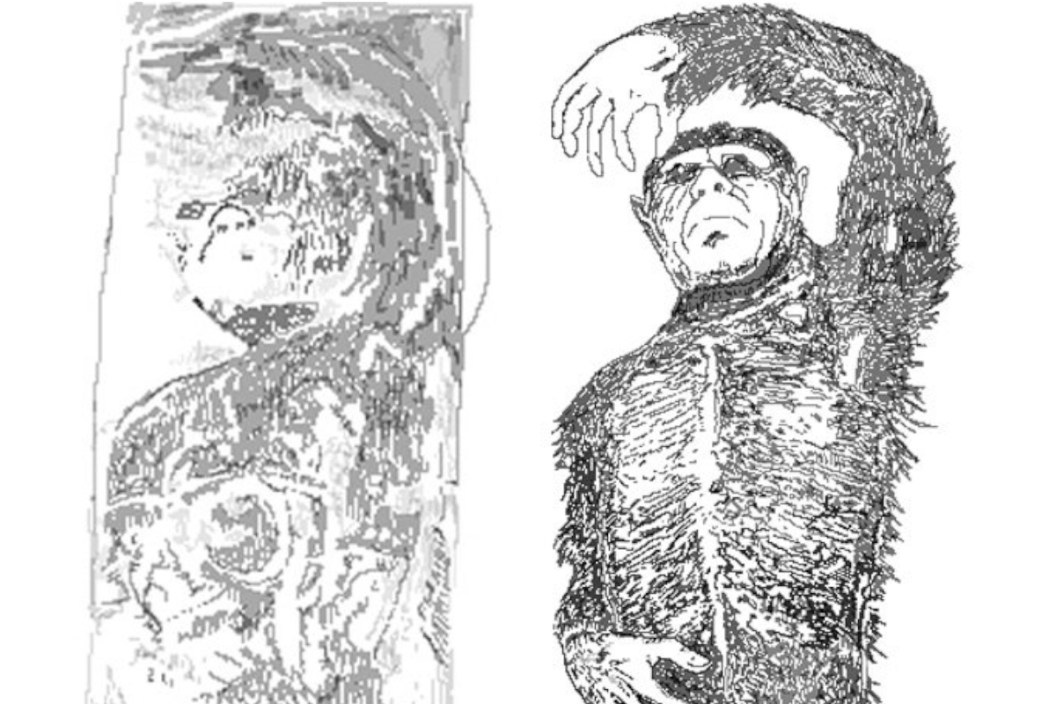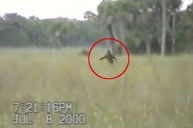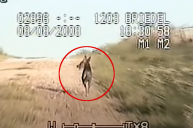Was the Minnesota iceman a real monster, or a monster hoax?
Everyone loves a good bigfoot story. Strange tales of wild, hairy, man-like creatures that could be a new species of primate unknown to science have fascinated humans for hundreds of years. The strange cryptids have many names, yeti in Nepal, orang pendek in Indonesia, the yowie in Australia and of course, sasquatch in North America. It does not matter what it is called. Stories of the beast may make zoologists roll their eyes, but the legends make for great stories told around a campfire with friends.
One could even argue the field of cryptozoology would not be as large as it is without the legends of an unknown creature wandering the west coasts of California. There is just one problem. There is no real, concrete proof of this alleged missing link of human evolution.
Or is there? Back in the 1960s and 70s, there was a traveling sideshow exhibit of a mysterious hominid that seemed to argue otherwise. It is a very strange tale, one that remains ingrained in American pop culture to this day. This is the story of the frozen creature that came to be known as the "Minnesota Iceman."
The Mysterious Frozen Creature
For those unfamiliar with the iceman. It is the body of a large, hairy, man-like creature completely encased in a block of ice. According to Scientific America, the "iceman" first came to the public eye in 1968 when someone alerted two prominent cryptozoologists, Ivan T. Sanderson, and Bernard Heuvelmans to the strange exhibit that was making the rounds at local malls, state fairs, and carnivals across America.
Some people compared the thing in the ice to a Neanderthal. Indeed, many of the advertisements for the exhibit labeled it as the elusive missing link. The first photos of the beast do not show a ton of detail, but Sanderson and Bernard were granted the chance to examine it closely.
The two scientists said the ape-like creature was male, 5-feet, nine inches tall, and that his head had a brow ridge, and an upturned nose. His feet were also quite large, making some wonder if this was the mysterious "bigfoot" everyone was so excited about. Another notable feature was the hands, which were large and distinctly human-like with five long digits each. The exhibit was said to be somewhat gruesome in nature because the beast was allegedly missing both eyes. One of the eyeballs allegedly hung from the socket. According to Sanderson and Heuvelmans, it was the direct result of a gunshot wound to the back of the beast's head.
The interesting thing is that both scientists believed the creature they examined was real. Heuvelmans went as far as to give it a scientific name: Homo pongoides. He even published a scientific paper on it in a Belgian journal one year later. Perhaps part of their conclusion comes from the fact that at one point they got a whiff of the body when the case cracked and a distinct odor of rotting flesh was allegedly present. However, it should be noted that other experts were not quite as convinced. The Smithsonian Institution's primatologist John Napier, also examined the body and concluded it was a hoax. He said the body was nothing more than a well crafted latex model. Unbelievably, the beast's promoter had an explanation for that, which we'll dive into later.
The creature's mysterious origins.
The man who was carting this frozen carcass all over the country was a fellow by the name of Frank Hansen. There is not a whole lot of information out there about Hansen as a person. We know he was an Air Force pilot. But in most accounts he is described simply as an exhibitor and showman. So, we cannot draw much more on his character from that. What we do know is his story of the iceman's origins changed several times. Each one seemingly more fantastic than the last.
The first story he told was that some Russian hunters had pulled the ice block and body out of the ocean while hunting seals near Siberia. If that sounds like the plot to a Scooby Doo cartoon to you, you are not alone. He later told a slightly different version of this tale, but instead of Russians, it was Japanese whalers finding it. He also claimed the body had origins in Hong Kong, where it was found in an undisclosed facility. Another popular origin story is that the creature was shot in Vietnam. Some variants of this story even claim it was U.S. Troops who killed it while patrolling the jungles and rice fields. The kicker of this story is that the body was allegedly smuggled back into the U.S. by hiding it in a body bag. How Hansen came into possession of the body in any of those circumstances is anyone's guess. See what we mean by each story being wilder than the last?
The one origin story we have the most detail on is Hansen's allegations that he killed the beast himself right here in the good old, USA, while deer hunting near Duluth. The entire account was published in Saga Magazine in 1970 and makes for a wild read. In the story, he claims he stumbled on three of the creatures tearing apart a deer carcass near Whiteface Reservoir in 1960.
"Without warning the male leaped straight into the air from its crouched position. His arms jerked upward high over his head, and he let out a weird screeching sound," Hansen wrote. "Screeching and screaming, he charged toward me. I cannot remember aiming my rifle nor do I recall pulling the trigger, but a bullet must have slammed into the beast's body."
He claims he shot twice with an 8mm Mauser and watched the beast fall over before he fled the woods. Hansen also claims he kept the story close to the chest since he was five years out from retirement in the military and didn't want to do anything to jeopardize his career. In any case, he claims he later went back and dragged the big, hairy carcass out of the woods before stuffing it into a large freezer in his basement.
Even stranger than his origin stories for the beast was his claim that he did not own the body. At one point, he claimed the body really belonged to a Hollywood big shot in the movie industry. Somehow this turned into a rumor that the mystery owner was screen legend Jimmy Stewart, which would be a twist that not even the movie industry could have dreamed up.
The Minnesota Iceman Hoax?
As we already mentioned, while Sanderson and Heuvelmans were convinced, many others in zoology were not. Remember how we mentioned John Napier thought the beast was nothing more than a latex rubber dummy? Apparently, Hansen did not deny this, but he had an explanation too. He claimed there were several copies of the body made for display purposes only. His reasoning for this? Well, he said the body was extremely human-like and questions began to arise on if killing the beast constituted murder.
In fact, at one point Hansen tried to take his exhibit to Canada and was held up due at customs due to concerns about the body being human. Hansen also claimed the FBI was interested in investigating the case because of that same possibility. Such an investigation never happened, likely because the FBI has more pressing concerns than a carnival sideshow exhibit.
Some skeptics have pointed out the body's appearance seemed to change over time. Believers have explained that away by stating Hansen thawed and re-froze the body many times for inspection, causing its position and appearance to change. Others simply see this as proof that all the alleged bodies in circulation were hoaxes. One thing we can say for certain, it does not seem that the body was subjected to many scientific examinations and tests beyond the ones done by Sanderson, Heuvelman, and others shortly after the body came to prominence.
If you are up on your bigfoot lore, you already know 1968 was during the prime time for a sort of "bigfoot mania" that was engulfing the country. Roger Patterson and Bob Gimlin had made headlines worldwide the year prior with their famous footage that supposedly shows one of the beasts striding through a dry creek bed in Northern California. So, the fact that an alleged body starts making the sideshow rounds one year later could potentially be viewed as suspicious.
We should also mention that there are a few unconfirmed rumors circulating on the Internet that Hansen found and commissioned an artist with Disney to create the body, which would help explain the realistic appearance. It does not appear Hansen's family has ever formally confirmed such an agreement ever took place though.
Where is the Minnesota Iceman now?
At some point, Hansen quit touring with the body and it completely disappeared from the public eye for decades after that. It left many cryptozoology enthusiasts with a new mystery. Where was the iceman? Hansen is believed to have died sometime around 2004, but even then, no one seems to know where the monster's body was all that time.
Then, after nearly a decade of no news on the body, the alleged "original" body suddenly popped up on eBay in February of 2013 with a list price of $20,000. The listing claimed that the body was a hoax and that the body being offered was the original Frank Hansen dragged to sideshows back in the 1960s. The listing can still be viewed via web archive. The photo does look just like the original photos of the body. Add a little ice to obscure the features, and it might be convincing.
We don't know how much it sold for, but the buyer of the iceman was Steve Busti, the owner of the "Museum of the Weird" in Austin, Texas. You guessed it, he ended up making it a permanent exhibit there. According to the museum's website, it is filled with the types of sideshow curiosities popularized by showmen like P.T. Barnum.
The Minnesota iceman now makes its home next to freak animal taxidermy, wax figures, mummies, and other oddities. It seems like a fitting place for it to end up. We many never know the full story behind the Minnesota iceman, but at least now everyone can see him when they visit Austin!
For more outdoor content from Travis Smola, be sure to follow him on Twitter and check out his Geocaching and Outdoors with Travis YouTube channels.
NEXT: THE AXIS DEER AND HOW THEY'RE IMPACTING PARTS OF THE UNITED STATES
WATCH





